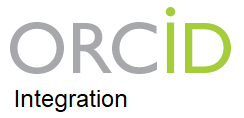Beneficios del Contacto Precoz Piel a Piel

Autores/as
DOI:
https://doi.org/10.37980/im.journal.revcog.2019785Resumen
[Benefits of early skin-to-skin contact]
ResumenEl contacto precoz piel a piel ha demostrado, según estudios recientes a nivel mundial, tener un efecto positivo para la salud del recién nacido como para la madre. Su práctica está muy relacionada con el parto natural, y el bajo costo que representa para todos los beneficios que proporciona, han generado un aumento en su aplicación dentro de hospitales y establecimientos de salud, no sólo en partos vaginales sino también en las cesáreas. El presente estudio hace una revisión de artículos recientes, provenientes en su mayoría de la base de datos PubMed, con el objetivo de mencionar, además de los beneficios ya conocidos de esta práctica, los nuevos beneficios que se han descubierto a nivel bioquímico, en recién nacidos prematuros y los que han nacido mediante cesárea.
Abstract
Early skin-to-skin contact has shown, according to recent studies worldwide, to have a positive effect on the health of the newborn as well as on the mother. Its practice is closely related to natural childbirth, and the low cost it represents for all the benefits it provides, has generated an increase in its application within hospitals and health facilities, not only in vaginal deliveries but also in cesareans. The present study reviews recent articles, mostly from the PubMed database, with the aim of mentioning, in addition to the already known benefits of this practice, the new benefits that have been discovered at the biochemical level, in born prematurely and those born by caesarean section.
Publicado
Número
Sección
Licencia
Derechos autoriales y de reproducibilidad. La Revista RevCog es un ente académico, sin fines de lucro, que forma parte de la Sociedad Centroamericana de Ginecología y Obstetricia. Sus publicaciones son de tipo ACCESO GRATUITO y PERMANENTE de su contenido para uso individual y académico, sin restricción. Los derechos autoriales de cada artículo son retenidos por sus autores. Al Publicar en la Revista, el autor otorga Licencia permanente, exclusiva, e irrevocable a la Sociedad para la edición del manuscrito, y otorga a la empresa editorial, Infomedic International Licencia de uso de distribución, indexación y comercial exclusiva, permanente e irrevocable de su contenido y para la generación de productos y servicios derivados del mismo.








